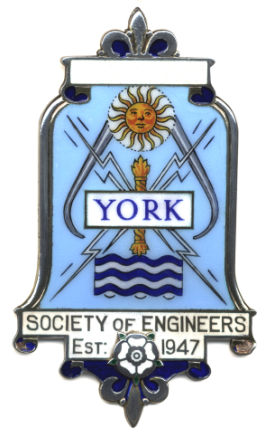
Tunnelling Ewart Pritchard – Design Manager, Joseph Gallagher Group
Event details
York Society of Engineers Lecture
The earliest known urban underground tunnels were the subterranean sewers of Mesopotamia. The Babylonians used tunnels extensively for irrigation, and Ancient Egyptians developed copper saws and hollow reed drills used to excavate temple rooms in rock cliffs. The ancient Greeks and Romans used tunnels to drain marshes, and for aqueducts.
The Modern Era of tunnelling began in the 1700s, with use of black powder and timbering. The most important development in modern tunnelling was the introduction of the tunnelling shield, patented by Marc Isambard Brunel in 1828, with the first crossing of the River Thames. The method wasn’t attempted again until the late 1860s. In 1878, Mr. Barlow advanced on Brunel’s shield, with the additions of a cylindrical overlapping skin, cast iron final lining, placement of grout outside the lining, and the use of screw jacks to move the entire shield forward as a single unit. This was the advent of soft ground tunnelling, but not without the culmination of technologies, such as compressed air and the cast iron segmental tunnel lining, developed over the prior decades.
In 1778 John Smeaton used compressed air for repairing the River Tyne bridge foundations at Hexham. And in 1795-6 tubbing in circles was used for the first time at the Walker Colliery on Tyneside, and with cast Iron segments used in the shaft of Percy Main Colliery.
Today, tunnelling is performed adopting old and new technologies. Long tunnels such as the Channel tunnel crossing were constructed largely with TBMs, but there is much use of Shotcrete (a sprayed concrete lining), synonymous with NATM and used extensively on almost all large diameter tunnels in the capital. It is TBMs that have brought the largest strides in H&S to tunnelling, minimising the need for men to work unprotected underground, and surpassing the need for compressed air working.
This lecture will be presented by Ewart Pritchard CEng - Design Manager for Joseph Gallagher, the leading tunnelling subcontractor in the UK, who will present a brief history of tunnelling methodologies and a case history of a mine access tunnel (Drift) designed and constructed for Irish Salt Mining Exploration, in Northern Ireland.
There probably is no branch of engineering in which the situations to be met and the difficulties to be overcome are so diverse and so varied as in tunnelling. - Henry S. Drinker’s (1878)
Image credit: "Survey says, 'This is one big tunnel.'" by WSDOT is licensed under CC BY-NC-ND 2.0.
Partners
